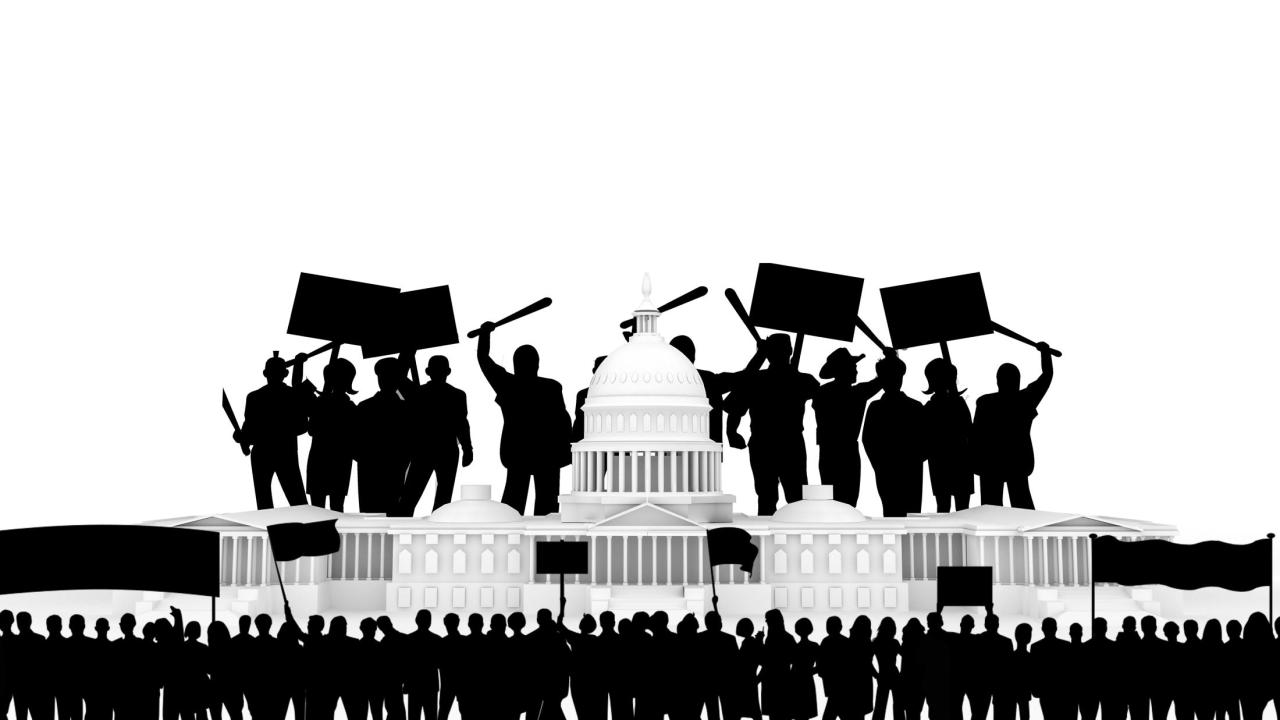
Reflections on the U.S. Capitol Insurrection
The DHI and the UC Davis Department of History held a conversation on the anniversary of the U.S. Capitol insurrection, considering the U.S.’s history of white supremacy, government mistrust, and conspiracy theories along with the consequences of January 6th. Professors David Biale, Gregory Downs, Justin Leroy, and Kathryn Olmsted gave short presentations on various aspects of the insurrection, its roots in U.S. history, and perspectives on how the country might move forward.
Professor Biale began by discussing the common comparison of January 6th, and the Trump administration more generally, with the fall of the Weimar Republic and the rise of Nazi authoritarianism. Biale made it clear that there were some crucial factors that distinguish the U.S. from Weimar Germany, in particular that there was never an attempt in Germany to discredit elections, but that there were also many similarities, most notably the spread of conspiracy theories and the eruption of violent incidents like Hiter’s failed coup, the Beer Hall Putsch.Biale warned that if there is a lesson to be learned from the Beer Hall Putsch, it is that there will be more violent incidents to come.
After Biale’s more European-centered perspective, Professor Gregory Downs discussed the history of insurrection in the U.S, focusing on Murat Halstead, a Reconstruction-era newspaper editor, who feared a second civil war. Halstead was worried by a series of incidents in the South where violent riots had erupted due to Black political participation, like the Wilmington and Colfax Massacres. Halstead pointed to the weaknesses of the Constitution and its limits in resolving issues of political legitimacy, and argued that another civil war was almost inevitable. The biggest danger for Halstead was the idea that only white people who believed in white supremacy could be accepted in the government and Downs highlighted white supremacy’s connection to government as one of the biggest lessons from the Reconstruction era.
Professors Justin Leroy and Kathryn Olmsted shared more contemporary analyses: Leroy expanded on the connection between white supremacy and the justice system in regards to sentencing the January 6th insurrectionists, and Olmsted pointed to the way that Trump had long weaponized conspiracy theories in his presidential campaign. Olmsted’s analysis of how extraordinary it was to have politicians openly espousing conspiracy theories ended with a set of sobering statistics that demonstrated that conspiracy theories have produced a kind of paranoia towards U.S. politics. Leroy’s presentation similarly discussed the limits of a certain mindset—in this case, the limits of the effectiveness of policing and prosecuting insurrectionists as “justice.” Leroy notes the vast inequalities between sentencing for January 6th participants and Black Lives Matter protesters, but sees these disparate legal sentences as evidence that policing and jailing cannot solve this political crisis.
The presentations were followed by a lively Q+A in which audience members asked about combating white supremacy and what the difference was between a lie and a conspiracy theory. To hear the exchange and for full participant remarks, watch the recording of the event on the DHI Youtube channel.
